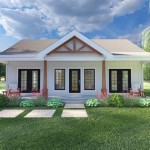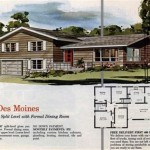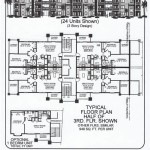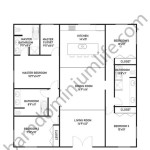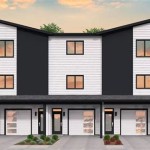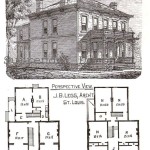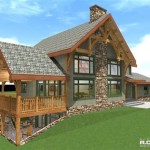One-Story Wheelchair Accessible House Plans: Design for Inclusive Living
Designing a home that accommodates individuals with mobility challenges requires careful consideration and planning. One-story wheelchair accessible house plans offer a practical solution, eliminating the need for stairs and providing a seamless, navigable living environment. These plans prioritize accessibility, functionality, and comfort, ensuring that all residents, regardless of their mobility level, can move freely and independently within their homes.
The principles of universal design are paramount when developing wheelchair accessible house plans. This approach aims to create spaces that are usable by all people, to the greatest extent possible, without the need for adaptation or specialized design. This includes considerations such as wider doorways and hallways, barrier-free entrances, accessible bathrooms and kitchens, and adaptable living spaces that can accommodate changing needs over time. Ignoring these design principles can lead to uncomfortable and even hazardous living conditions for wheelchair users and others with mobility limitations.
The availability of various one-story wheelchair accessible house plans caters to diverse needs and preferences. From compact and efficient designs to larger, more luxurious layouts, there are options to suit different budgets and lifestyles. Many architectural firms and online resources specialize in creating and providing such plans, often offering customizable options to tailor them to specific site conditions and individual requirements. Detailed attention to detail in plan design significantly improves the quality of life of the inhabitants.
Key Point 1: Essential Accessibility Features in One-Story House Plans
Several fundamental features are crucial for ensuring optimal accessibility in a one-story home designed for wheelchair users. These elements directly impact the ease of movement, safety, and overall usability of the space.
Entrances and Exits: Barrier-free entrances are essential. This means providing a level entry or a ramp with a gentle slope (generally 1:12, meaning one inch of rise for every twelve inches of run). Doorways should be at least 32 inches wide to accommodate wheelchairs comfortably. Lever-style door handles are easier to operate than knobs, especially for individuals with limited hand strength or dexterity. Covered entrances offer protection from the elements, enhancing safety and comfort during inclement weather.
Hallways: Hallways should be a minimum of 36 inches wide, allowing for easy maneuvering of a wheelchair. Wider hallways, ideally 42-48 inches, are preferable, especially in high-traffic areas. Avoid abrupt changes in flooring materials, as these can create tripping hazards and impede wheelchair movement. Consider installing handrails along hallways to provide additional support and stability for those who need it.
Bathrooms: Accessible bathrooms are critical for independent living. This includes features such as a roll-in shower with a seat and grab bars, a height-adjustable or wall-mounted sink with knee clearance, and a toilet with grab bars on both sides. The turning radius within the bathroom should be at least 60 inches to allow for easy maneuvering of a wheelchair. Adequate lighting is also essential for safety and visibility.
Kitchens: An accessible kitchen should incorporate features such as lowered countertops, a sink with knee clearance, and pull-out shelves and drawers for easy access to items. Consider installing an electric or induction cooktop with front controls, as these are easier and safer to use for individuals in wheelchairs. Ample space for maneuvering around the kitchen island and appliances is essential. Appliance placement should be carefully considered to minimize reaches and bending. A side-by-side refrigerator is often preferable to a top- or bottom-freezer model for accessibility.
Flooring: Hard, smooth, non-slip flooring is ideal throughout the home. Options such as hardwood, laminate, tile, and some types of vinyl are suitable. Avoid thick pile carpets, as these can be difficult to navigate in a wheelchair. Consider using area rugs with non-slip backings to add warmth and style without compromising accessibility.
Key Point 2: Adapting Living Spaces for Enhanced Functionality
Beyond the fundamental accessibility features, adapting living spaces to meet the specific needs of wheelchair users can significantly enhance functionality and comfort. This involves carefully considering the layout, furniture placement, and storage solutions within each room.
Living Room: Arrange furniture to allow for easy maneuvering of a wheelchair. Avoid overcrowding the space with unnecessary items. Consider using furniture with open space underneath to allow for knee clearance. Power outlets should be easily accessible, ideally located at a height that can be reached from a wheelchair. Remote-controlled lighting and window coverings can further enhance convenience and independence.
Bedrooms: Provide ample space around the bed for easy maneuvering of a wheelchair. Consider using an adjustable bed that can be raised or lowered to facilitate transfers. Install accessible closets with adjustable shelves and rods. Ensure that light switches and electrical outlets are within easy reach from the bed. A clear path to the bathroom is crucial for nighttime accessibility. Consider a bedside commode for those with limited mobility.
Outdoor Spaces: Extend the principles of accessibility to outdoor spaces. Provide a smooth, level pathway from the entrance to the patio or garden. Consider using raised garden beds to make gardening accessible to individuals in wheelchairs. Install outdoor lighting to improve safety and visibility at night. A covered patio or deck can provide a comfortable outdoor living space that is protected from the elements.
Storage Solutions: Accessible storage solutions are essential for maintaining an organized and clutter-free home. Consider using pull-out shelves, adjustable shelves, and lazy Susans to maximize storage space and make items easier to reach. Install lever-style handles on cabinets and drawers. Utilize vertical storage to maximize space and keep items within easy reach. Clear plastic storage containers can help to identify contents easily.
Technology Integration: Integrating smart home technology can significantly enhance independence and convenience for wheelchair users. Consider installing voice-activated lighting, temperature control, and security systems. Smart home devices can be controlled remotely using a smartphone or tablet. This can be particularly helpful for individuals with limited mobility or dexterity.
Key Point 3: Cost Considerations and Funding Options
Constructing or renovating a home to be wheelchair accessible can be a significant investment. However, there are various cost-saving strategies and funding options available to help make accessible housing more affordable.
Planning and Design: Engaging a qualified architect or designer with experience in accessible design is crucial for ensuring that the plans are both functional and cost-effective. A well-designed plan can minimize the need for costly modifications later on. Consider using modular construction techniques to reduce construction time and costs. Prioritize essential accessibility features over purely aesthetic upgrades to stay within budget. Obtain multiple bids from contractors to ensure that you are getting the best possible price.
Material Choices: Selecting cost-effective materials without compromising on durability and safety is important. Consider using laminate flooring instead of hardwood, or opting for standard-size tiles to minimize waste and installation costs. Explore energy-efficient appliances and fixtures to reduce long-term operating costs. Consider using recycled or reclaimed materials to reduce environmental impact and potentially lower costs.
Government Programs: Numerous government programs offer financial assistance or tax incentives for individuals seeking to make their homes more accessible. These programs may include grants, loans, or tax credits. Research federal, state, and local programs to determine eligibility and funding availability. The Department of Housing and Urban Development (HUD) offers various programs that support accessible housing initiatives. The Department of Veterans Affairs (VA) provides assistance to veterans with disabilities seeking to modify their homes.
Non-Profit Organizations: Several non-profit organizations provide assistance to individuals with disabilities seeking to improve their housing accessibility. These organizations may offer grants, low-interest loans, or technical assistance. Contact local disability advocacy groups to learn about available resources. Habitat for Humanity sometimes partners with organizations to build or modify homes for individuals with disabilities.
Tax Deductions: Certain home modifications for medical purposes may be tax deductible. Consult with a tax professional to determine eligibility for these deductions. Keep detailed records of all expenses related to accessible home modifications. Properly documenting expenses is essential for claiming tax deductions.
Value Engineering: Analyze the design and construction plans to identify potential cost savings without compromising accessibility or functionality. This may involve simplifying the design, using alternative materials, or streamlining the construction process. Value engineering should be performed by experienced professionals who understand the principles of accessible design.
Implementing one-story wheelchair accessible house plans requires careful planning, attention to detail, and a commitment to creating a comfortable and inclusive living environment. By prioritizing accessibility features, adapting living spaces, and exploring different funding options, individuals can create homes that meet their needs and promote independence and well-being.

Accessible Handicap House Plans Style Results Page 1

Exclusive Wheelchair Accessible Cottage House Plan 871006nst Architectural Designs Plans

Wheelchair Accessible Small House Plans Drummond

Plan 8423jh Handicapped Accessible Split Bedroom Southern House Plans Floor

Wheelchair Accessible Small House Plans Drummond

Plan 062h 0012 The House

Design Notes Accessible House Plans Bathroom Floor

Small Space Accessibility Accessible Homes House Plans Design

Handicap Accessible House Plans Wheelchair The Designers

House Plan 78776 Bungalow Style With 1375 Sq Ft 2 Bed Bath

